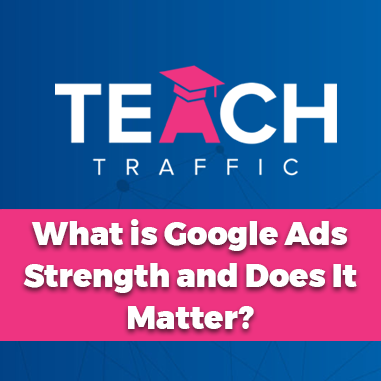What is Google Ads Strength and Does It Matter?
Powered by Embed YouTube Video
Perhaps you’ve logged into your Google Ad Account and noticed an alert indicating that the ad strength is poor. In this article, you’ll discover precisely what this means.
Is it genuinely worth paying attention to, and if so, how can you enhance it?
If you’re uncertain about what I mean by ‘poor ad strength,’ let me illustrate with an example from my Google Ad Account here.
As you can see above, it indicates that the ad strength is poor and offers suggestions on how to improve it.
Here’s something most people won’t mention, and Google definitely won’t explicitly state: achieving good or excellent ad strength might not ensure that your ad reads well. What do I mean by that?
You’ll see here the suggestions:
Enhancing my ad strength could involve various strategies, such as adding more headlines or incorporating popular keywords into them. However, the reality is that doing so might not always be relevant or effective. In my experience assisting individuals at TeachTraffic.com, I’ve noticed that adding multiple headlines can sometimes result in an ad that doesn’t read well.
So for example, with this ad that I’ve got here:
In my online retargeting course ad, I have 5 different headlines regarding my course. And, you know, if I add more headlines, what I might find here is that, when I look at my preview:
The ads might not be very readable, leading people to hesitate clicking on them due to their unusual structure.
Consequently, it might not serve my best interest to include additional headlines. Instead, I prioritize having a well-written ad with concise and effective ad copy, even if it means fewer headlines.
It’s better to prioritize quality than to have an increased number of headlines that make the ad seem awkward
I added a bunch of headlines, which you know, I’m not going to use and therefore don’t have to actually read all that well. But I have included, I’d say up to 15 different headlines.
In the illustration, I’ve made efforts to enhance my ad by adding more headlines and incorporating popular keywords, even though I’m unable to use certain trademarked terms due to Google and Facebook’s policies. Despite these attempts, my ad strength remained poor. Frankly, I don’t prioritize the ad strength metric much.
I’ve assisted numerous accounts with poor ad strength, yet their campaigns perform remarkably well, boasting high click-through and conversion rates. Therefore, my advice is not to overly fret about ad strength. What truly matters is crafting an ad that reads well, effectively communicates your offer, and entices the right audience to click.
Focus on creating compelling content that resonates with your audience instead of solely striving to improve the ad strength from poor to average or good. While there are ways to boost it, following Google’s suggestions doesn’t always align with your business’s best interests.
